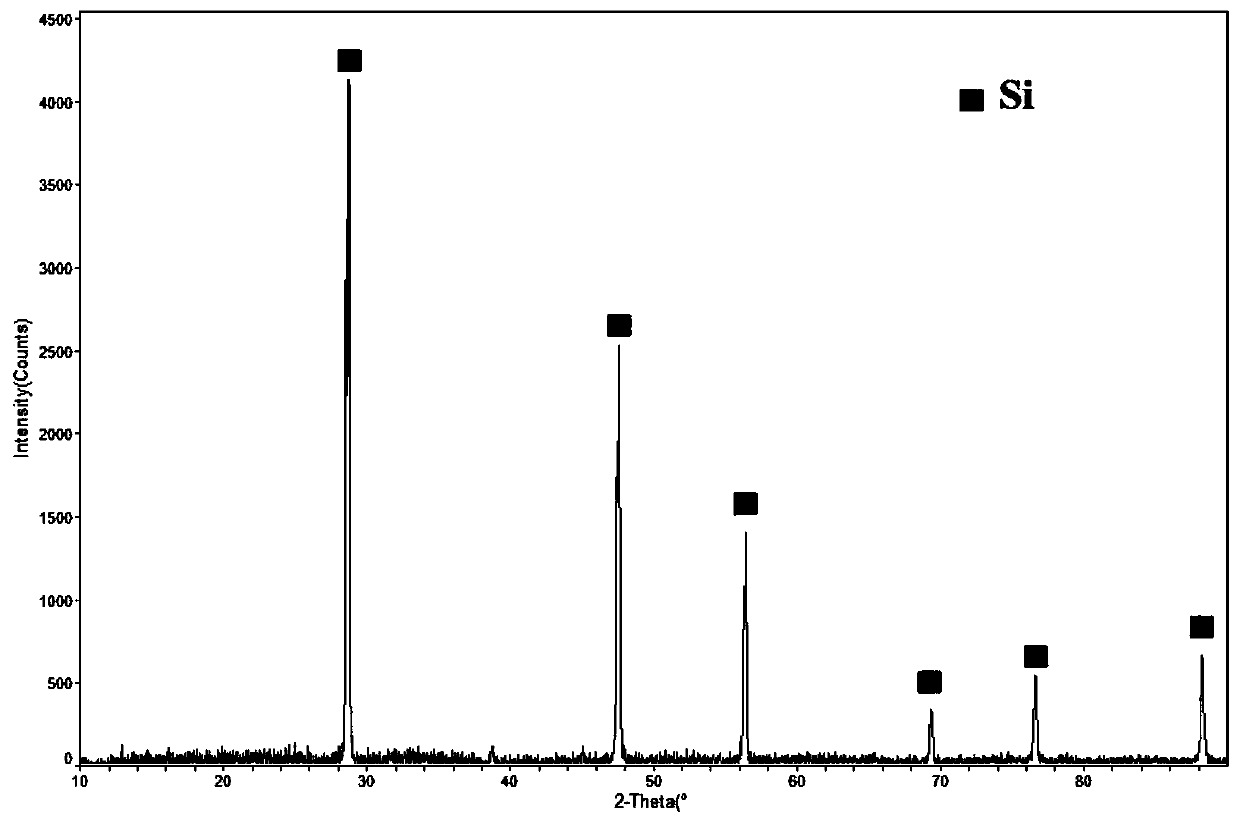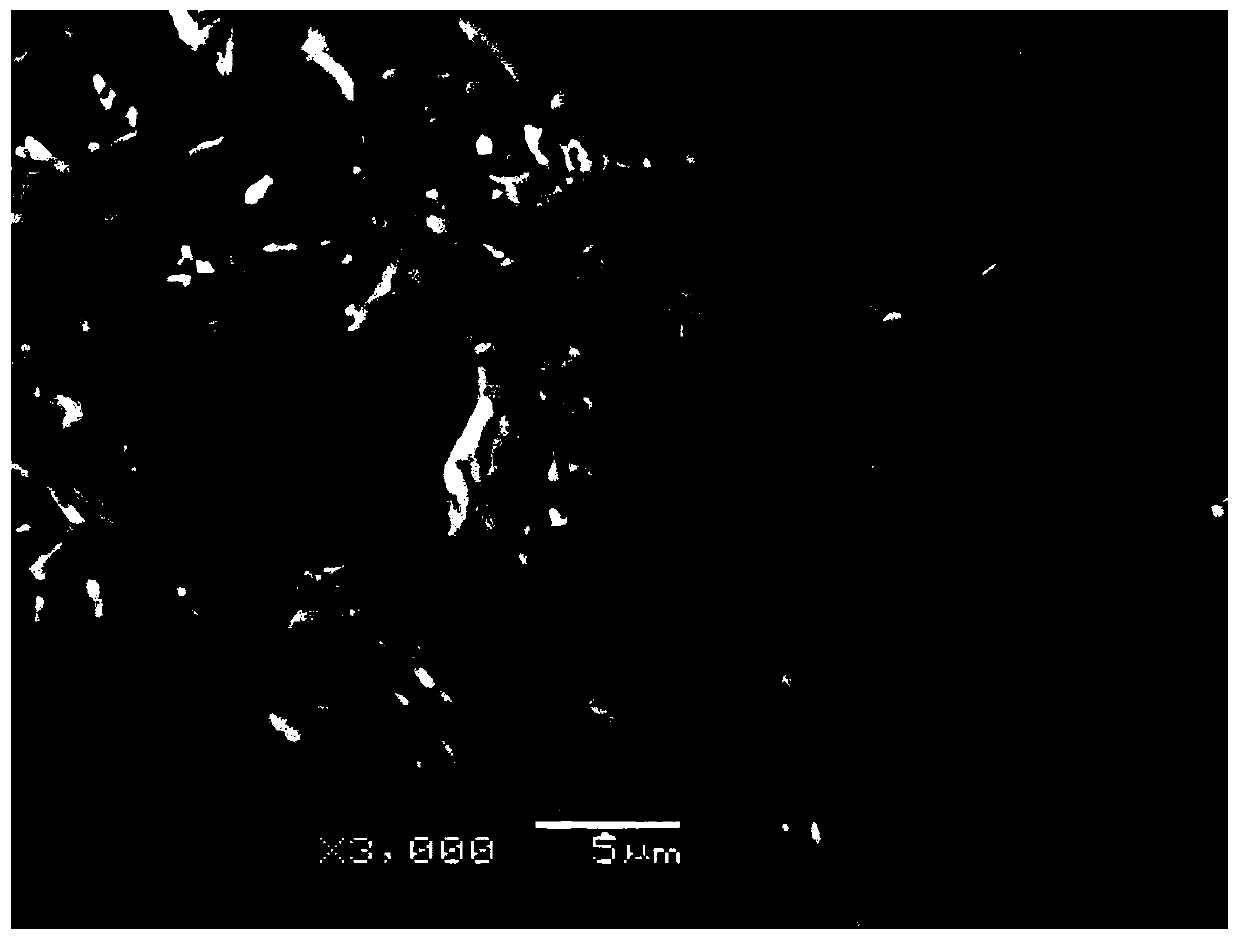Preparation method and application of three-dimensional dendritic crystal porous silicon
A three-dimensional dendrite, porous silicon technology, applied in silicon and other directions, can solve the problems of high price of powder materials, difficult to control the morphology and structure of metallographic porous silicon materials, uneven particle size, etc., to reduce production costs, control and The experimental conditions are easy to control and the effect of solving the bottleneck problem of industrialization
- Summary
- Abstract
- Description
- Claims
- Application Information
AI Technical Summary
Problems solved by technology
Method used
Image
Examples
Embodiment 1
[0031] The preparation method includes the following steps:
[0032] S1. Precursor alloy preparation: take an appropriate amount of aluminum-silicon alloy, use melting equipment to melt the aluminum-silicon alloy to obtain a liquid aluminum-silicon alloy, subject the obtained liquid aluminum-silicon alloy to appropriate melt treatment, and then regulate the cooling of the melt Speed and pouring to obtain the sample, the obtained sample is processed by wire cutting and pre-grinding to obtain a precursor alloy with a thickness of 5μm~500μm;
[0033] S2, the precursor alloy with a thickness of 5 μm to 500 μm obtained in step S1 is placed in an etching solution for dealloying treatment to obtain a dealloyed sample;
[0034] S3. Subsequent treatment: Wash the dealloyed sample obtained in step S2 repeatedly with deionized water for 100s~300s, then put it in absolute ethanol and clean it with ultrasonic for 6~15min to remove remaining impurities and attachments Finally, put the wet sampl...
Embodiment 2
[0036] The preparation method includes the following steps:
[0037] S1. Preparation of precursor alloy: take appropriate amount of Al-7Si binary alloy without any melt treatment, pour into graphite mold to obtain the required precursor alloy sample, and cut the sample into 15mm diameter and 500μm thickness by wire cutting The flakes were polished with 800#, 1200#, and 2000# sandpaper respectively, and then polished with a polishing machine until bright, to obtain a precursor alloy with a thickness of 200μm.
[0038] S2, dealloying treatment: the precursor alloy obtained in step S1 is placed in a sodium hydroxide solution with a concentration of 1.0 mol / L for chemical dealloying treatment to obtain a dealloying sample. The process parameters are as follows: the dealloying temperature is 25°C , The time of dealloying is 24h, and ultrasonic oscillation is supplemented during the dealloying process.
[0039] S3. Subsequent treatment: Wash the dealloyed sample obtained in step S2 repeat...
Embodiment 3
[0042] The preparation method includes the following steps:
[0043] S1. Preparation of precursor alloy: take an appropriate amount of Al-7Si binary alloy, use melting equipment to melt the aluminum-silicon alloy to obtain a liquid aluminum-silicon alloy, and add a certain amount of Al-10Sr master alloy to melt the liquid aluminum-silicon alloy After treatment, the liquid aluminum-silicon alloy is poured into the graphite mold to obtain the required precursor alloy sample. The sample is cut into 15mm diameter and 500μm thick slices by wire cutting, and then polished with 800#, 1200# and 2000# sandpaper respectively. , And then polished to bright with a polishing machine to obtain a precursor alloy with a thickness of 200 μm.
[0044] S2, dealloying treatment: the precursor alloy obtained in step S1 is placed in a hydrochloric acid solution with a concentration of 1.0 mol / L for chemical dealloying treatment to obtain dealloying samples. The process parameters are as follows: dealloy...
PUM
| Property | Measurement | Unit |
|---|---|---|
| thickness | aaaaa | aaaaa |
| thickness | aaaaa | aaaaa |
Abstract
Description
Claims
Application Information
 Login to View More
Login to View More - R&D
- Intellectual Property
- Life Sciences
- Materials
- Tech Scout
- Unparalleled Data Quality
- Higher Quality Content
- 60% Fewer Hallucinations
Browse by: Latest US Patents, China's latest patents, Technical Efficacy Thesaurus, Application Domain, Technology Topic, Popular Technical Reports.
© 2025 PatSnap. All rights reserved.Legal|Privacy policy|Modern Slavery Act Transparency Statement|Sitemap|About US| Contact US: help@patsnap.com



